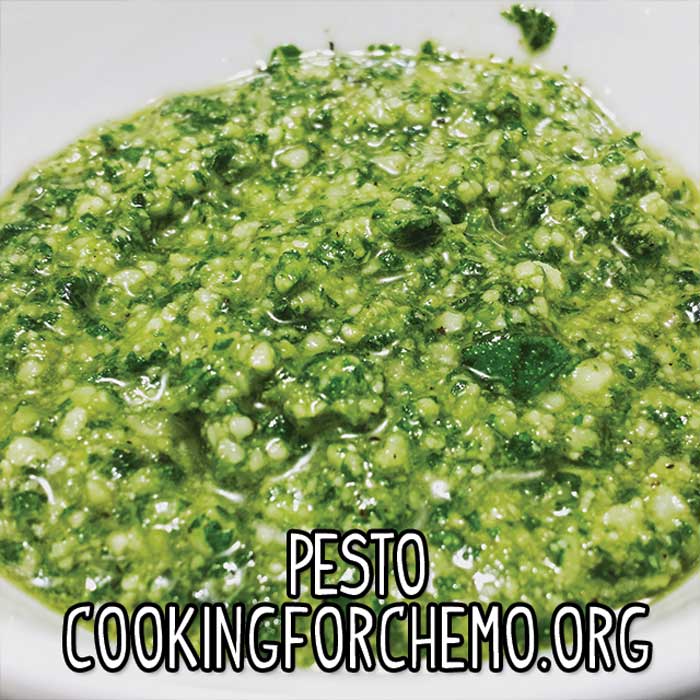Metallic Taste in Mouth

Metallic Taste in your mouth can be an unrelenting torture. During cancer treatment many people report this awful experience. The good news is that you have found the solution to metallic taste!
In this article, we are going to discuss the most effective cooking technique for combating metallic tastes. It is called palate cleansing.
Palate Cleansing for Metallic Taste
Palate Cleansing is a simple, but effective technique that you need to know when you are cooking. It is an extremely important concept that brings balance to dishes that may feel too heavy in your mouth. It is especially useful in taking heavy dishes, like pot roast, and making them more palatable by lightening the perceived weight of the dish in your mouth.
In addition to this, Palate Cleansing is extremely effective at minimizing metallic taste in mouth. Palate Cleansing is where you use acidic sour flavors to create a lightweight feeling in your mouth and on your tongue when you eat food. It is an easy to apply cooking technique to use on your loved ones with cancer who can only eat a couple spoonfuls of food before becoming exhausted from eating.
By incorporating palate cleansing techniques into your cooking automatically and organically, you will be able to help overcome metallic tastes without giving it a second thought. When the palate cleansing technique is applied correctly, you won’t notice it in your food, and will do it automatically in the search for Roundness of Flavor.
3 Ways To Employ Palate Cleansing
1. Vinegar and Sugar Method
Add 1-2 tablespoons [15-30ml] of red wine vinegar and 1-2 tablespoons [15-30ml] of granulated sugar during the seasoning part of your recipe when cooking. The vinegar lightens the perceived weight of the dish and the sugar masks the flavor of the vinegar.
This technique is by far the easiest technique to use while cooking to overcome metallic tastes. A little bit of vinegar goes a long way, and this technique is best used inside of fully cooked one-pot type dishes. Think pot roast, chicken cacciatore, red beans and rice, chicken and dumplings, clam chowder, beef stew, and any recipe with a sauce.
This technique works very well inside of sauces. 2 tablespoons of red wine vinegar is enough for a 7 quart (6 liter) batch of chicken and dumplings. But each recipe, and patient’s preferences vary. Remember everyone is unique!
Start with a smaller amount, allow to cook for a few minutes, and then taste. If the dish isn’t light enough, add more vinegar and sugar and repeat the tasting process. Remember to add your seasonings slowly to allow them to cook and give their flavors time to bloom.
2. Fresh Herb Method
Top your finished dish with fresh herbs that naturally Palate Cleanse.
These herbs are:
cilantro (fresh coriander leaves)
flat-leaf parsley
basil
mint
This technique adds a delightful, fresh flavor pop to any dish. It also helps with metallic tastes. But, I would not advise using uncooked fresh herbs later in chemotherapy treatments as your immune system may not be able to handle the raw yeasts and bacteria that live on uncooked plants.
In the case of basil, you can add it to a hot marinara immediately before serving. This will kill any bacteria or yeasts, and will allow that wonderful fresh basil taste to permeate the sauce.
3. Citric Acid Method
Use fresh citrus juices in your cooking or squeeze them over the top of your finished food.
This includes:
oranges
lemons
limes
grapefruit
blood oranges
clementines
You may notice the pattern in palate cleansing is that the addition of acidity helps to cleanse your palate. There are many types of palate cleansers, but ultimately the most effective ones are acidic in nature. Fresh squeezed lime over some delicious chicken or pork tacos not only lightens the dish, but gives it a whole new level of character and deliciousness!
I would like you to notice how Palate Cleansing uses sour flavor to combat the weight of a dish. If you follow the proper seasoning order (salty, savory, spicy, sour, and sweet), you will naturally use palate cleansers in the effort to obtain Roundness of Flavor. This offers the secondary benefit of reducing metallic tastes, which in itself will help with disinterest in food and loss of appetite.
Here are a few ingredients that you can incorporate into your cooking that really help with palate cleansing.
Palate Cleansing Ingredients Chart
| Palate Cleansing Ingredient | How To Use It |
| red wine vinegar | add in the middle of cooking |
| lemon juice | add at the end of cooking |
| lime juice | apply to food before serving |
| orange juice | add during cooking |
| basil | add fresh on top of finished meal |
| parsley (Italian flat leaf) | add fresh on top of finished meal |
| cilantro (fresh leaves of a coriander plant) | add fresh on top of finished meal |
One last takeaway from this lesson: Sugar always follows vinegar. Always balance your sour flavors with sweet flavors unless you are intentionally making a sour dish. Sweet really does bring balance to the sour flavors and creates a delightful and enticing flavor combination. You may want to consider lemon-lime flavored drinks and snacks to help with metallic tastes on the go.